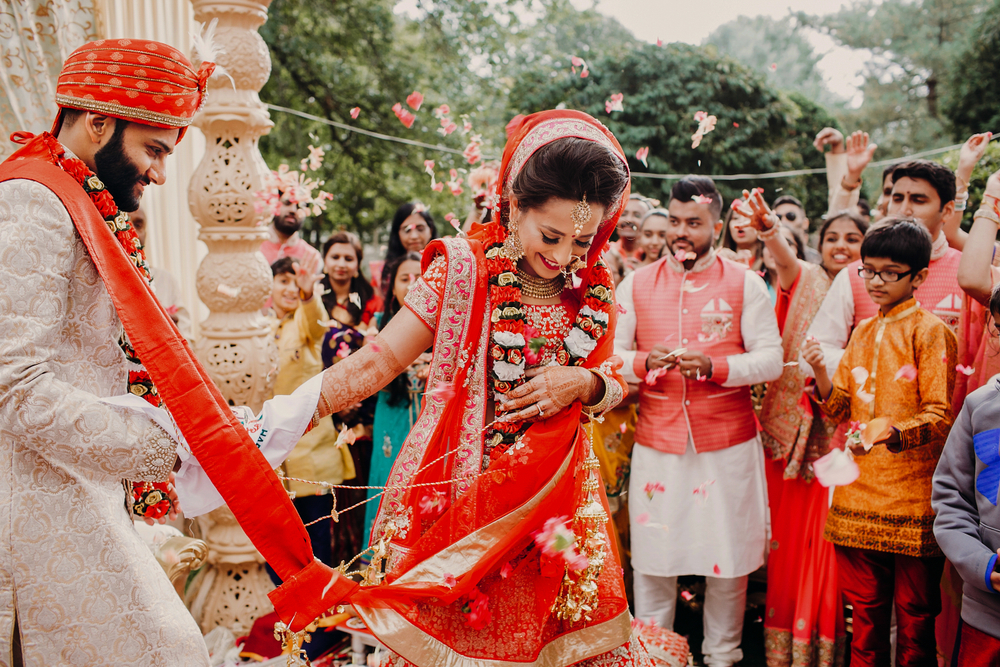A Traditional Indian Wedding
Indian Wedding Traditions – My brother surprised me when he announced that he would have an Indian wedding in Fiji. Being from a very unorthodox Indian family, I did not expect this. Our family went to Fiji in June 1997 to celebrate this joyous event. As Hindus, my family considers marriage a sacred institution, and my brother’s wedding was the 13th of 16 ceremonies in a person’s life, dedicated to the Vedas, the oldest sacred texts of Hinduism.
Before the wedding, the bride and groom had to receive blessings from the elders of each family. We traveled to their house to meet her parents and siblings, and our parents chatted to determine if they made a compatible couple. Once they agreed, the engagement was blessed, and rings were exchanged in the “Misri” ceremony. The wedding celebration began with many religious rituals, or “Puja’s,” that Hindus perform to pray or show respect to their chosen Gods or Goddesses.
The bride and groom remained separated in their own residences until the day of the wedding, each performing their own set of rituals. My brother’s first ceremony was the Tilak Puja, where a pundit (priest) put a mark called a teeka on his forehead as a symbol of the rising sun. The second day was filled with religious services, including the Mandap Mahurat, Grah Shanti, and Ghari Puja.
On the third day, family and friends gathered to celebrate the upcoming nuptials, and my brother was pasted with turmeric powder for beautification. The wedding ceremony was held at the bride’s residence under a decorated four-pillared canopy called a mandap. The bride wore a red sari heavily embroidered with gold thread to signify fertility and accessorized with traditional ornate gold jewelry. The groom wore a customary Sherwani or a simpler dhoti and tunic.
On the day of the wedding, the bride and groom fasted, and the bride made her stunning entrance, led by her maternal uncle, female cousins, and friends. The wedding service was fascinating, with the parents and close relatives playing important roles.

[toc]
Indian Wedding Traditions and Customs
Indian weddings are a vibrant and elaborate affair that involves many customs and traditions. A wedding is not just a union of two individuals, but also a coming together of their families and friends. Indian wedding traditions are an essential part of the ceremony, and they vary based on the region, culture, and religion. In this article, we will explore the various customs and traditions that make Indian weddings unique and unforgettable.
Pre-Wedding Rituals
Indian weddings usually start with a series of pre-wedding rituals that take place a few days before the actual ceremony. These rituals are meant to bless the bride and groom and prepare them for the wedding. Some of the most common pre-wedding rituals include:
• Engagement Ceremony: This is where the bride and groom exchange rings and officially announce their engagement.
• Mehndi Ceremony: This is where the bride gets intricate henna designs applied to her hands and feet, which symbolize love and prosperity.
• Sangeet Ceremony: This is a musical evening where the families of the bride and groom come together to sing, dance, and celebrate.
The Wedding Day
The wedding day is the most significant day in an Indian wedding. It usually takes place during the day and is divided into several parts.
• Baraat: This is the groom’s procession, where he arrives at the wedding venue on a decorated horse or car, accompanied by his family and friends.
• Jaimala Ceremony: This is where the bride and groom exchange garlands, signifying their acceptance of each other.
• Kanyadaan: This is the most important ritual where the father of the bride gives her away to the groom. It signifies the transfer of responsibility from the father to the groom.
• Saat Phere: This is the most sacred ritual in an Indian wedding, where the bride and groom take seven vows around a sacred fire. Each vow symbolizes a promise they make to each other.
Post-Wedding Rituals
The wedding ceremony may be over, but the celebrations continue for a few more days with a series of post-wedding rituals. These rituals are meant to ensure that the newlywed couple has a happy and prosperous married life.
• Vidaai Ceremony: This is the most emotional ritual where the bride says goodbye to her family and leaves with her husband. It signifies the end of her life as a daughter and the beginning of her new life as a wife.
• Griha Pravesh: This is where the bride enters her new home and is welcomed by her husband’s family. It symbolizes her acceptance into the new family.
• Reception: This is a grand party that the groom’s family throws to introduce the bride to their friends and family.
Conclusion
Indian weddings are a beautiful amalgamation of customs and traditions that are steeped in culture and religion. From the pre-wedding rituals to the post-wedding celebrations, every event is filled with joy, love, and happiness. It is no wonder that Indian weddings are known for their grandeur, hospitality, and exquisite cuisine. We hope this article has given you a glimpse into the rich and vibrant world of Indian weddings.
